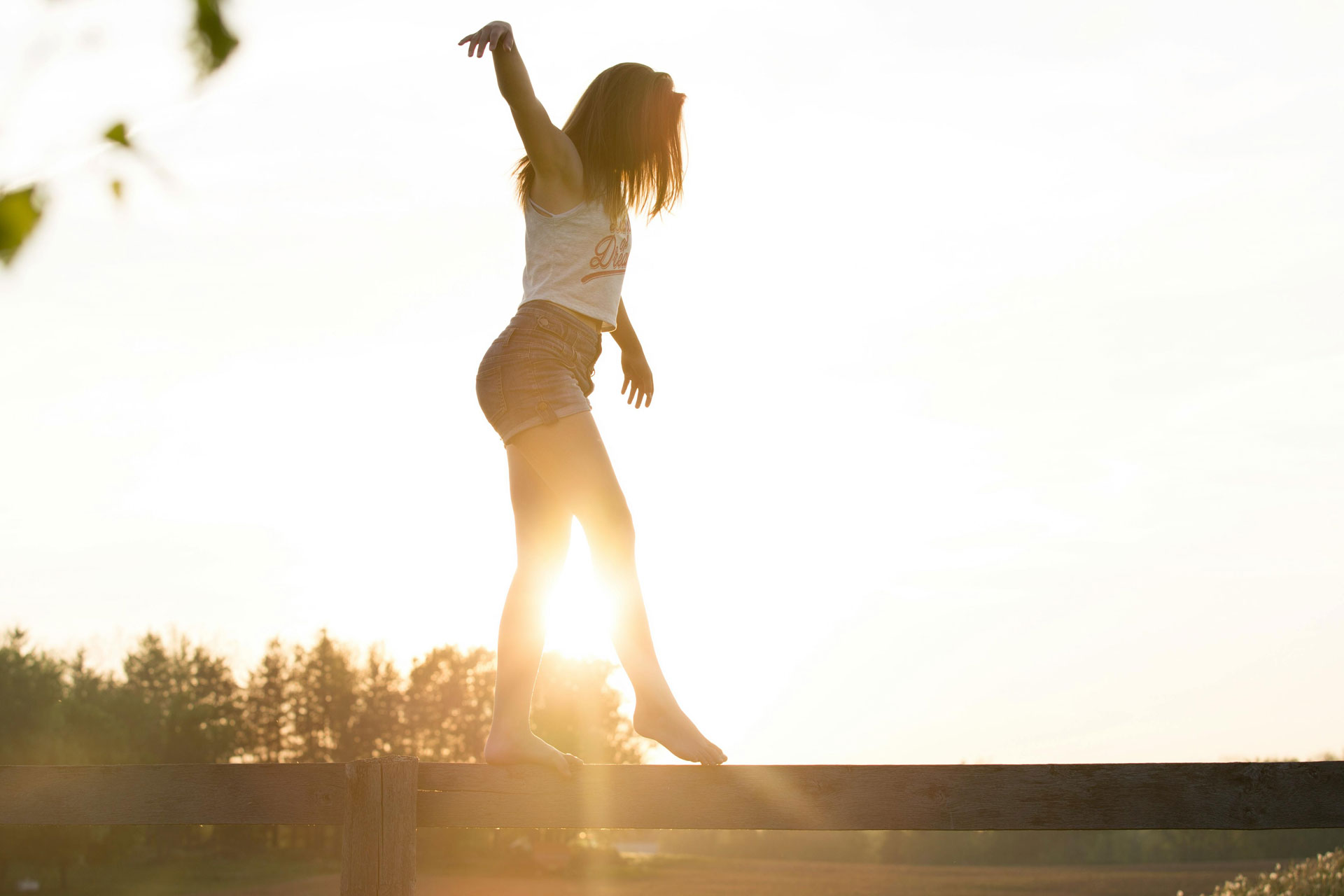SURI Sustainable electric toothbrush, £75

By
2 years ago
How do we get the balance right? asks Camilla Hewitt

While balancing a busy lifestyle might top your wellbeing agenda, improving your actual balance might not be something you’ve considered. Staying steady on our feet is essential to preventing and healing from injury, particularly as we get older: here’s why.
Chiropractor Dr Luther Moss tells us, ‘Balance is complex, made up of information we receive from our eyes, our ears, and the movement of joints and muscles. These tell our brain the position and direction in which we are moving. If these systems aren’t working well, the brain doesn’t have a complete picture and will not be able to control movement effectively.’
We know balance can deteriorate with age and injury, but our screen time may also be leaving us a little shaky. Osteopath Nadia Alibhai comments, ‘I have many 70+ aged patients who are more mobile than my 30-40 year olds as they go for regular walks, do gardening, and potter around the house, whereas some of the younger generation are glued to screens and stuck to desks.’ Nadia continues: ‘A study by Lee JH in 2016 showed that forward head posture can have an effect on static balance. Forward head posture is something we see a lot due to the increase in screen usage; it alters the centre of gravity of the body compared to the head being in a neutral position. The body then attempts to adapt to these changes by altering its balance control, which decreases balance ability while performing different activities and increases the risk of falling and musculoskeletal injury.’
But there are ways to counteract this. Dr Moss says, ‘Improving your balance is possible and can be done effectively with only a few minutes of practice each day. A great starting exercise is simply to stand on one leg while cleaning your teeth in the morning and the other in the evening.’ (Always make sure you have something to hold onto to prevent falls.) Nadia adds, ‘Someone who is dominant on one side will likely have built more strength on that side, and so when asked to stand on the weaker leg, they may and they wobble more.’ Her tip: ‘Try to be ambidextrous! Alternate holding your toothbrush with the right and left hand so your muscles get used on both sides.’
Other exercises to try include seated leg raises, heel-to-toe walking and, as your balance improves, side leg raises and walking lunges. Ball sports that require hand-eye coordination will also lessen your wobble, as will classes such as tai chai, qigong, and pilates. Kirsten King, founder of Fluidform, tells us, ‘Pilates activates our slow-twitch fibres and smaller muscles, which support our joints, posture, and balance.’ She recommends trying a pelvic curl with a small ball to stabilise your pelvis, activate your abdominal muscles, and improve your balance.
If you have been looking for an excuse to book into Heckfield Place, this might be it. Guests there have access to its 17,000 sq/ft of wellbeing space, where you’ll find Master Practitioner Benjamin Raphael Pluke. Having trained in osteopathy, he uses manipulation and muscle work techniques to encourage a balanced spinal posture.
BOOK IT: From £550, B&B. heckfieldplace.com
SURI Sustainable electric toothbrush, £75

ADVERTISEMENT
Bala Pilates ball, £26

ADVERTISEMENT
NOHRD Eau-Me balance board, £315

On Cloudnova sneakers, £148

ADVERTISEMENT